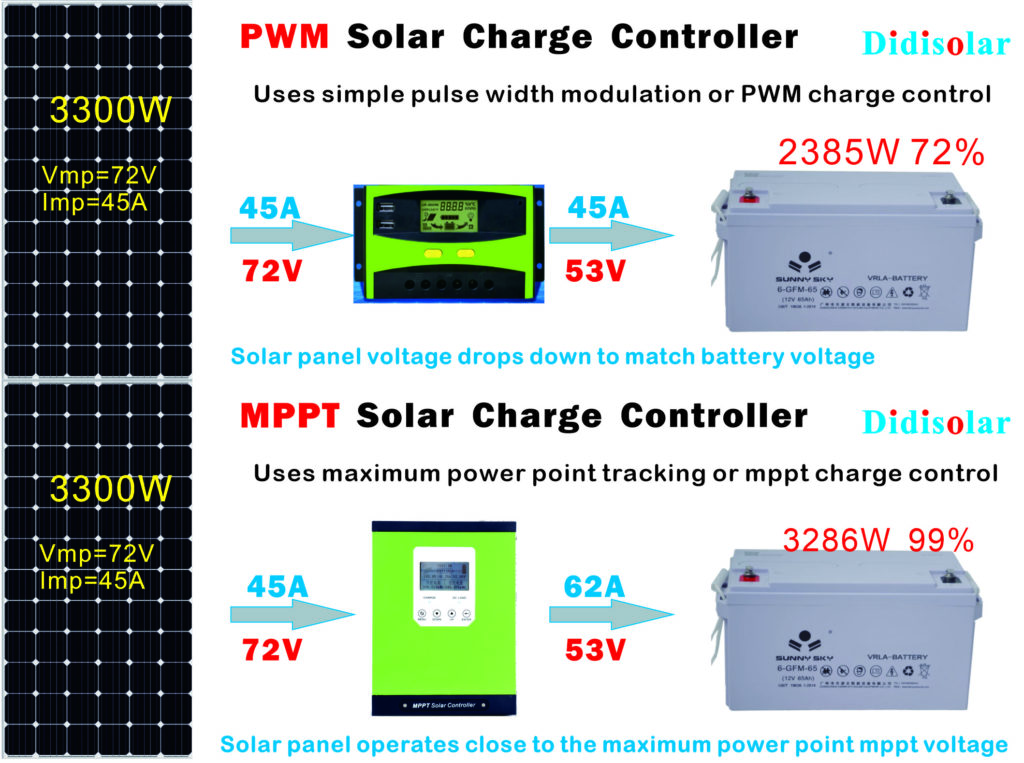There are lots of solar charge controllers on the solar market at present. They are divided into two types which are MPPT controller and PWM controller. A number of people choose MPPT controller or PWM controller according to the price, but what is the different between both of them? Maybe you don’t know, I will give you a simple introduction.
The MPPT controller has high charging efficiency.
 From these two pictures, we can see that using the same solar panel but different solar charge controller to charge battery, the final amount of electricity is different. Using PWM controller is only 2385W, while using MPPT controller is 3286W. In other words, when using 3300W solar panels, MPPT controller generates more 901W power than PWM controller per hour. This is the difference in charging efficiency.
From these two pictures, we can see that using the same solar panel but different solar charge controller to charge battery, the final amount of electricity is different. Using PWM controller is only 2385W, while using MPPT controller is 3286W. In other words, when using 3300W solar panels, MPPT controller generates more 901W power than PWM controller per hour. This is the difference in charging efficiency.
PWM controller generates 901W power less than MPPT controller per hour. According to the law of conservation of energy, 901W will be converted into heat, leading to serious heating of PWM controller, thus further reducing efficiency of PWM controller. Due to overheating, some bad quality PWM controller may cause component damage or fire. As for high-power PWM controller, it may affect the battery and greatly shorten battery life.
These are all problems what we encountered before. Some clients complained their battery had problems after only one year. After checking, we found that the current was not well controlled when using PWM controller to charge battery. When the battery is about to be full charged, it is still charged with large current, causing battery shell to deform even catch fire, eventually burning the customer’s electrical appliance.
Therefore, we suggest customers to use MPPT controller as much as possible, MPPT controller is a relatively stable solar charge controller on the market and has sufficient protection for battery. Although the price is higher than PWM controller, the power generated by MPPT controller can make up for the difference.

